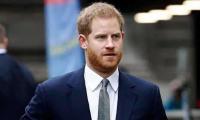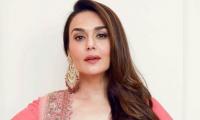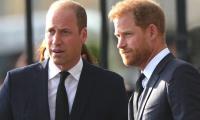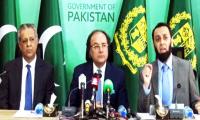The three-day All-Pakistan Music Conference (APMC), which ended on March 11, unfolded a profusion of musical talent that lies hidden in our society.
The most encouraging aspect of it was the liking and the expertise for classical Indo-Pakistani classical music that exists among our youngsters even though our media don’t patronise it too much. They’d rather broadcast and telecast pop music. All three days featured a whole lot of youngsters, alongside more mature and seasoned classical vocalists and instrumentalists, who displayed their oozing talent.
The final evening, Sunday, featured among others young Liaquat Humayun from Khyber-Pakhtunkhwa on the Rubab. He rendered the Raag Madhuvanti, accompanied on the Tabla by Irfan Haider. Humayun’s deft and agile finger work that produced the Raag was highly commendable. It was talent personified. Rubab is an instrument not much heard of and not very common, yet this young man was so at-home with it.
Then there was Raag Rageshvari by the father-son duo of Karam Abbas and Ahmed Ali. They were accompanied on the Tabla by Irfan Haider, on the Tanpura by Wajid Ali, on the Sarangi by Gul Muhammad, and on the harmonium by Akhtar Hussain.
Perhaps the most deft execution was the Tabla recital by Ustad Shahbaz Hussain. Shahbaz Hussain, a pupil of, among others, Ustad Fayyaz Khan, rendered the Taal Rupak on the Tabla with harmonium accompaniment by Akhtar Hussain. He’s also been a pupil of the great Tabla maestro of the subcontinent, Ustad Allah Rakha.
A day earlier, (Saturday) young Ahsan Ali of the Patiala Gharana rendered a classical vocal piece with Ustad Bashir Khan on the Tabla, Gul Muhammad on the Sarangi, Wajid Ali on the Tanpura and Akhtar Hussain on the harmonium.
However, the most winsome performance on Day 2 was the Shehnai, an instrument that has always figured so prominently in weddings, in poetry and in love lore in the subcontinent. It was most deftly rendered by Ustad Abdullah Khan with Ustad Idrees Hussain on the harmonium.
Another interesting item on Day 2 was the performance by an American Sitarist, Paul Livingstone. He presented the Raag Rageshvari. Livingstone is a pupil of legendry Sitar maestro Pandit Ravi Shanker.
However, the star performance during the three days was the one by a young woman from Lahore, Aisha Ali, who rendered a Thumri, the Raag Bihagde, “Main to Sayyan ko dheere se jaga Lai re”. She really had the voice of a nightingale. Accompanied on the Tanpura by Wajid Ali, on the Sarangi by Gul Muhammad, and Azam Ali on the Tabla, her rendition was absolutely perfect.
All three days were a happy reminder that music was a pursuit that was very popular in our set-up and not only that but that there was so much of talent in our midst.
The expansive Frère Hall gardens were packed to capacity on all three evenings, especially the final evening. The audience comprised all segments of society, from the most trendy and the elite, to the ones who were from the more traditional and conservative segment of society. There were ladies in the most trendy of semi-Western attires alongside the more conservative ones.
What was common among them was the enthusiasm with which they were enjoying the performances, giving total lie to the oft-held belief that we as a society are overly conservative, to the extent that we frown upon aesthetic pursuits. It was heartening to see children of all age groups accompanying their parents and evincing keen interests in the numbers. Ayla Raza and Shaista Qazi deserve all the laurels for having organised such a smashing success of an event.
This general view shows the commercial district of Pakistan's port city of Karachi. — AFP/FilePatternsThe Canvas...
Participants pose for a group photo during the award ceremony on May 4, 2024. — Facebook/Effie PakistanKARACHI:...
Participants pose for a group during a 3-Day Sabz Journalism Environmental Reporting training in Karachi on May 5,...
Police officials stand guard during a search operation against criminals in Karachi on May 6, 2024. — PPIFollowing...
Sindh’s senior minister for transport & mass transit, excise & taxation , narcotics control and...
This image shows the logo of the Sindh Building Control Authority . — Facebook/Sindh Building Control...







